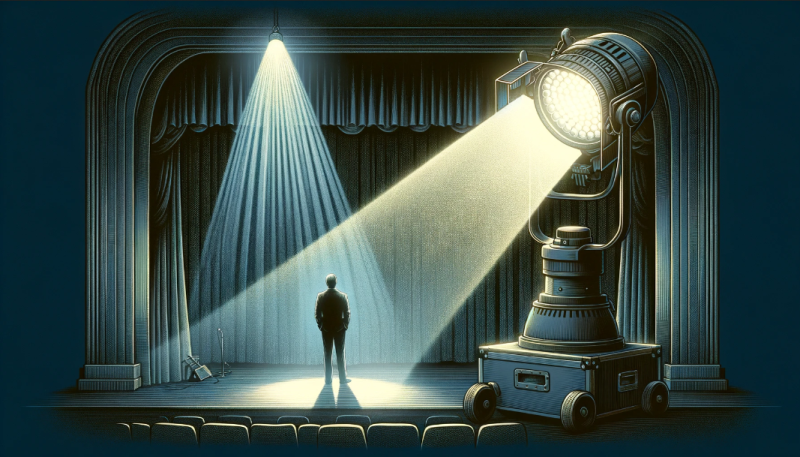The Role of Lighting in Storytelling and Mood Setting

In the world of art, lighting is more than just a source of illumination; it's a conveyor of emotion and narrative. From the delicate portrayals in theater to the fervent energy of concerts, lighting plays a crucial role in storytelling and emotional expression. The shifts in lighting can guide the audience's emotions, enhance the immersion of a story, and even determine the success of a performance to an extent. This article will explore the creative uses of lighting in various performance contexts and how it weaves stories and sets moods through its visual magic.
The Relationship Between Lighting and Emotion
The relationship between lighting and emotion is intricately linked, with almost a magical ability to influence our feelings. In the realm of performing arts, varying the color temperature, intensity, and direction of lighting can create an array of atmospheres. For instance, warm yellow lighting is often used to evoke a sense of intimacy and coziness, reminiscent of home and tranquility; while cooler tones like blue or green are typically employed to generate feelings of mystery, tension, or the unknown. Additionally, rapid changes in lighting can mimic dynamic scenes such as chases or tense confrontations, whereas slow and soft lighting transitions are more suited for quiet, contemplative moments. Through these subtle manipulations of lighting, emotions can be guided wordlessly, drawing the audience deeper into the narrative.
The Application of Lighting in Different Performance Environments
Lighting plays varied roles in different performance settings, serving not just to illuminate but to enhance the audience's experience. In theatrical performances, for example, in the famous Broadway musical "The Lion King," lighting design skillfully simulates the African savannah sunrise, creating a grand and stirring atmosphere that transports the audience to the heart of the story. In concerts, such as the legendary rock band Queen's live shows, lighting complements the music's rhythm, using different colors and beam shapes to amplify the emotional and energetic impact of the songs. In sports events, like the Olympic opening ceremonies, large-scale light shows are used to heighten the audience's engagement and awe, narrating stories and conveying themes through meticulously crafted lighting effects. These examples illustrate the versatility and innovation of lighting design in various contexts, showcasing its role not just as a visual embellishment but as a powerful medium for emotion and storytelling.
Lighting Techniques for Creating a Story Atmosphere
Delving into the technical intricacies of lighting design reveals its fascinating aspects. Different types of lighting fixtures, such as spotlights, wash lights, and moving heads, each play their unique roles. Spotlights are used to highlight key characters or objects, creating dramatic focus; wash lights provide uniform background illumination, helping to set the overall mood of a scene; moving heads, with their dynamic beams and color changes, are often employed for creating motion and visual impact. In lighting design, the choice of color is paramount. Different colors can evoke various emotions and associations, such as red being linked to passion and danger, while blue often suggests calmness and contemplation. Additionally, the intensity and direction of light are crucial; they can be used to create shadow effects, adding depth and dimension to a scene. Through these technical methods, lighting designers silently narrate stories and craft unforgettable visual experiences.
How to Choose and Use Stage Lighting
Selecting and using stage lighting is both an art and a science. Understanding when and where to use specific types of fixtures is critical to achieving the desired effect. First, consider the nature of the event or performance. Is dramatic focusing required, or is there a need for a softer, overall ambiance? For instance, smaller theater productions might benefit more from precise spotlights and gentle wash lights, while large-scale concerts or events may call for more dynamic and vividly colored moving heads. Secondly, the choice of color is crucial, as different hues can convey different emotions and themes. Lighting designers need to consider how to use color to enhance the emotional depth of a performance. Additionally, the arrangement and control of lighting are key, as proper layout can maximize the use of light sources to create optimal visual effects. For non-professionals, some basic knowledge of lighting setup and operation can be enough to create an impressive ambiance in small-scale events or home gatherings. In summary, understanding how to select and apply lighting according to specific contexts is vital for achieving visual and emotional impact, whether for a professional stage lighting designer or an amateur enthusiast.
The Innovative Future of Lighting
As technology continues to advance, the future of lighting design is evolving towards more innovative and interactive directions. Modern lighting technologies, such as LEDs and intelligent control systems, have already begun to change our understanding and utilization of stage lighting. The future of lighting design is not just about creating visual effects, but also about achieving interaction and emotional resonance with audiences. For instance, by using sensors and interactive technologies, lighting can adjust in response to audience reactions or performers' movements, creating a more dynamic and engaging experience. Moreover, with the integration of virtual and augmented reality technologies, lighting designers can create visual experiences that transcend traditional stages, offering audiences a novel immersive viewing experience. These innovations not only showcase the limitless possibilities of lighting technology but also underscore its vital role in narrative art. With ongoing technological advancements and innovations, we can anticipate that lighting will play an increasingly significant role in the future of art and entertainment, continually pushing the boundaries of storytelling and emotional expression.





Dejar un comentario